Tamron SP 90mm F/2.8 Di MACRO 1:1 VC USD (Model F017) Review

Introduction
The Tamron SP 90mm F/2.8 Di MACRO 1:1 VC USD (Model F017) is a redesigned version of Tamron's classic 90mm macro lens. It features a fast maximum aperture of f/2.8, enhanced Vibration Compensation (VC) technology with XY-Shift compensation, an improved ultrasonic focus motor for quiet AF operation, and a moisture-sealed and dust-proof construction. The optical formula comprises 14 lens elements in 11 groups, including two XLD (Extra Low Dispersion) glasses and one LD (Low Dispersion) element and an iris diaphragm with 9 rounded aperture blades, and there's a new Fluorine coating to help repel water and oil. The Tamron SP 90mm F/2.8 Di MACRO 1:1 VC USD (Model F017) lens officially retails for £580 / $649. This is also the first Tamron lens to be compatible with the new TAP-in Console, which allows you to customise autofocus positions and adjust the mechanical setup and preferences of the lens.
Ease of Use
The Tamron SP 90mm F/2.8 Di MACRO 1:1 VC USD (Model F017) is quite a big and bulky lens, measuring almost 12cms in length and wighing in at 610g. You can use it on a smaller APS-C body, where the focal length will change to 145mm or thereabouts, or a full-frame camera like the 5DS R (as shown below), where it retains the 90mm focal length and feels much better balanced.
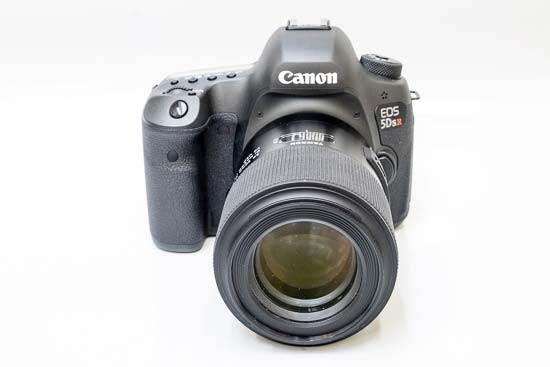 The Tamron SP 90mm F/2.8 Di MACRO 1:1 VC USD (Model F017) lens mounted on a Canon EOS 5DS R
The Tamron SP 90mm F/2.8 Di MACRO 1:1 VC USD (Model F017) lens mounted on a Canon EOS 5DS R
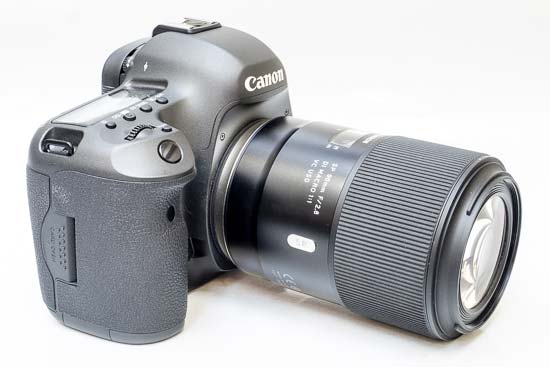 The Tamron SP 90mm F/2.8 Di MACRO 1:1 VC USD (Model F017) lens mounted on a Canon EOS 5DS R
The Tamron SP 90mm F/2.8 Di MACRO 1:1 VC USD (Model F017) lens mounted on a Canon EOS 5DS R
 The Tamron SP 90mm F/2.8 Di MACRO 1:1 VC USD (Model F017) lens mounted on a Canon EOS 5DS R
The Tamron SP 90mm F/2.8 Di MACRO 1:1 VC USD (Model F017) lens mounted on a Canon EOS 5DS R
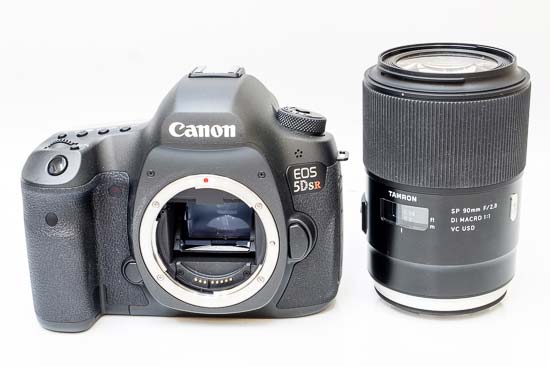 The Tamron SP 90mm F/2.8 Di MACRO 1:1 VC USD (Model F017) lens alongside a Canon EOS 5DS R
The Tamron SP 90mm F/2.8 Di MACRO 1:1 VC USD (Model F017) lens alongside a Canon EOS 5DS R
Build quality is excellent, despite Tamron traditionally offering lenses at the cheaper end of the market. The more premium-priced Tamron SP 90mm F/2.8 Di MACRO 1:1 VC USD (Model F017) feels very solid in your hand, thanks to the metal outer barrel and filter thread.
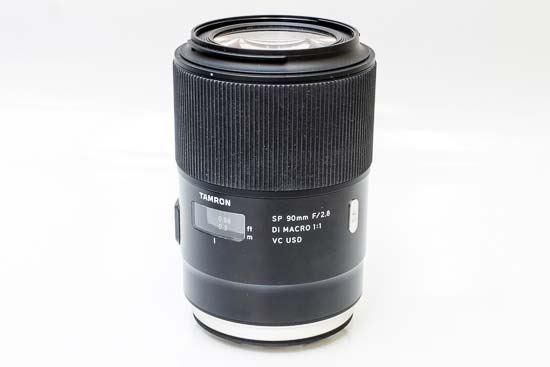 Side of the Tamron SP 90mm F/2.8 Di MACRO 1:1 VC USD (Model F017) lens
Side of the Tamron SP 90mm F/2.8 Di MACRO 1:1 VC USD (Model F017) lens
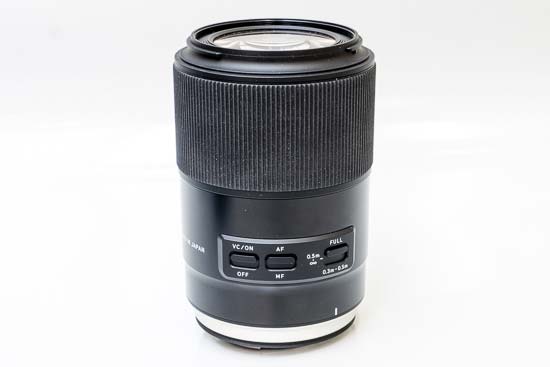 Side of the Tamron SP 90mm F/2.8 Di MACRO 1:1 VC USD (Model F017) lens
Side of the Tamron SP 90mm F/2.8 Di MACRO 1:1 VC USD (Model F017) lens
A switch on the lens barrel can be used to limit the focusing distance of the Tamron SP 90mm F/2.8 Di MACRO 1:1 VC USD (Model F017), useful when you know exactly how close you'll need to get to your subject ahead of the shot. There are three settings - 0.3-0.5m, 0.5m-Infinity, and Full (essentially 0.3m-Infinity).
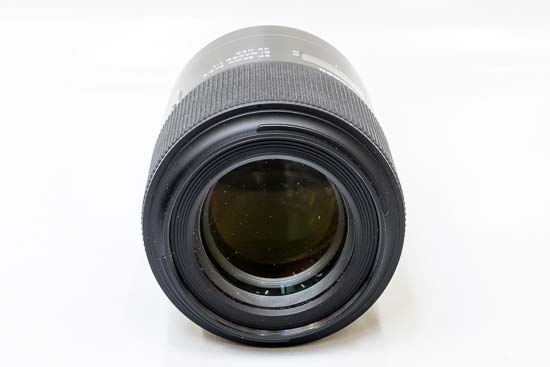 Front of the Tamron SP 90mm F/2.8 Di MACRO 1:1 VC USD (Model F017) lens
Front of the Tamron SP 90mm F/2.8 Di MACRO 1:1 VC USD (Model F017) lens
The focusing ring is generously wide and has a ridged, rubberised grip band. There's a distance scale that runs from the closest distance of 30cm to infinity, along with a useful magnification scale, but there's no depth of field scale. An AF/MF switch on the side of the lens makes it easy to switch between the two focusing systems.
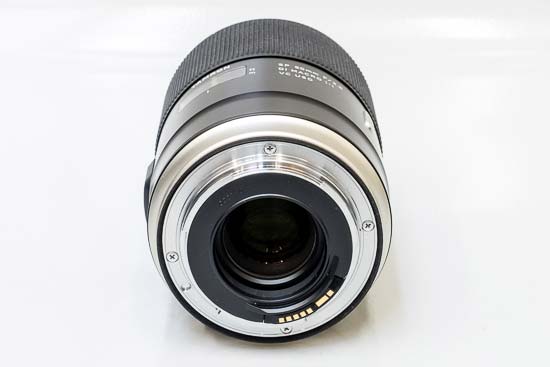 Rear of the Tamron SP 90mm F/2.8 Di MACRO 1:1 VC USD (Model F017) lens
Rear of the Tamron SP 90mm F/2.8 Di MACRO 1:1 VC USD (Model F017) lens
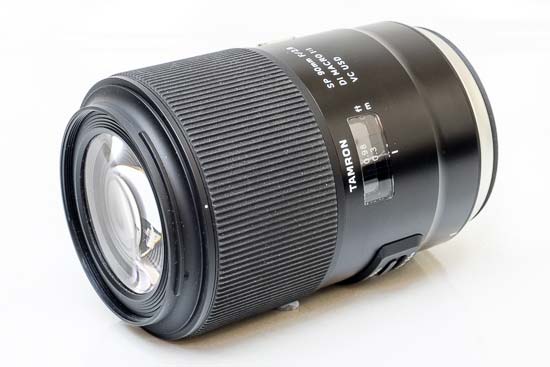 Front of the Tamron SP 90mm F/2.8 Di MACRO 1:1 VC USD (Model F017) lens
Front of the Tamron SP 90mm F/2.8 Di MACRO 1:1 VC USD (Model F017) lens
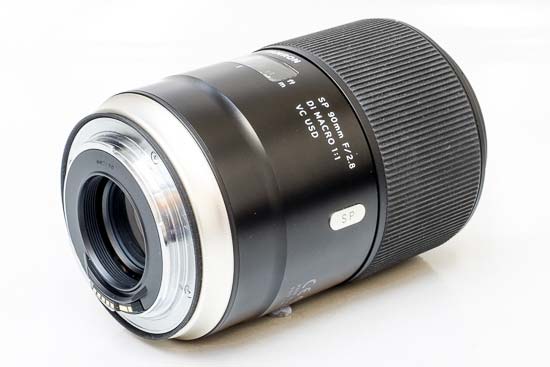 Rear of the Tamron SP 90mm F/2.8 Di MACRO 1:1 VC USD (Model F017) lens
Rear of the Tamron SP 90mm F/2.8 Di MACRO 1:1 VC USD (Model F017) lens
The final control is the VC On / Off switch, which turns the lens' built-in Vibration Compensation on and off. This is a big selling point for the Tamron SP 90mm F/2.8 Di MACRO 1:1 VC USD (Model F017), as neither the Canon or Nikon equivalents offer image stabilisation. In practice we found it offered around 4 f-stops of compensation, obviously dependant upon your own particular hand-holding technique, making it much easier to use the lens in low-light.
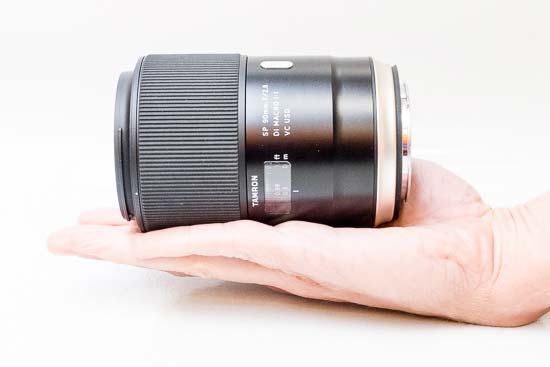 The Tamron SP 90mm F/2.8 Di MACRO 1:1 VC USD (Model F017) lens, in-hand
The Tamron SP 90mm F/2.8 Di MACRO 1:1 VC USD (Model F017) lens, in-hand
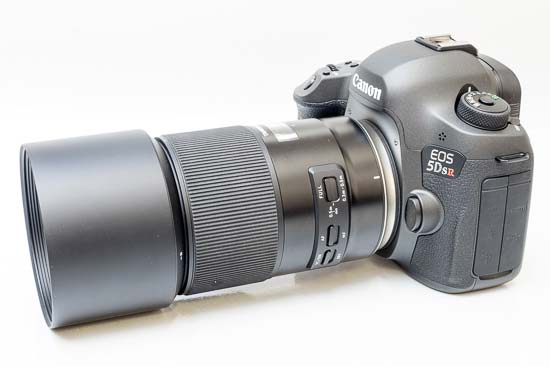 The Tamron SP 90mm F/2.8 Di MACRO 1:1 VC USD (Model F017) lens with the supplied lens hood fitted
The Tamron SP 90mm F/2.8 Di MACRO 1:1 VC USD (Model F017) lens with the supplied lens hood fitted
The lens is supplied with lens caps and a substantial circular lens hood - there's no bag included. The filter size is 62mm.
Focal Range
At the 90mm focal length the angle of view is 27°2'.
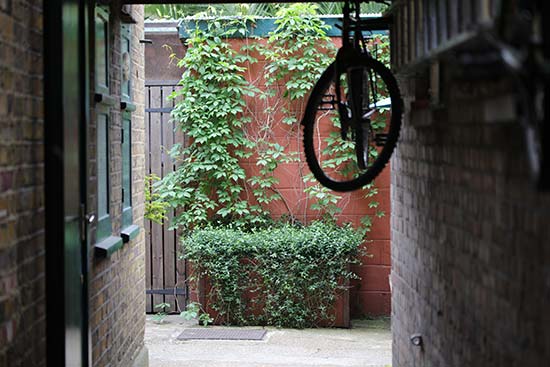 Field of view at 90mm
Field of view at 90mm
Auto-focus
The Tamron SP 90mm F/2.8 Di MACRO 1:1 VC USD (Model F017) features a USD (Ultrasonic Silent Drive) that allows near-silent auto-focusing. Importantly, this solution allows instant manual override even when the focus mode switch is in the AF position. Focusing is fully internal, meaning the length of the lens always remains constant. In use, we found the focusing to be indeed very quiet, and also fast with the lens mounted on a Canon EOS 5DS R body.
Chromatic Aberrations
Chromatic aberrations, typically seen as purple or blue fringes along contrasty edges, are impressively well controlled with this lens - the examples below show the worst-case scenario.
 |
 |
Light Fall-off
With the Tamron SP 90mm F/2.8 Di MACRO 1:1 VC USD (Model F017) wide open at f/2.8, you can see some noticeable light fall-off in the corners. Stopping down helps, although to completely get rid of this phenomenon, you will need to use an f-stop of f/5.6 or smaller.

Macro
The Tamron SP 90mm F/2.8 Di MACRO 1:1 VC USD (Model F017) is a macro lens that lets you reproduce a life-size image of the subject on the image sensor. The close-focus point is at 30cm from the film/sensor plane and the maximum magnification ratio is 1:1. The following example illustrates how close you can get to the subject, in this case a CompactFlash card.
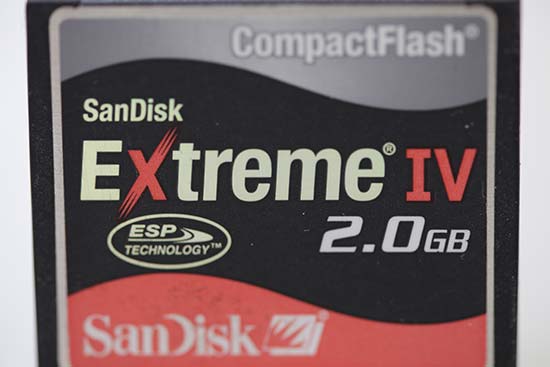 Close-up performance
Close-up performance
Bokeh
Bokeh is a word used for the out-of-focus areas of a photograph, and is usually described in qualitative terms, such as smooth / creamy / harsh etc. One of the reason to buy a fast lens is to be able to isolate the subject from the background. Tamron was apparently very much aware of this requirement, as they employed an iris diaphragm with 9 rounded blades for a pleasing rendering of the out-of-focus highlights. Based on what we have seen, we can say that they largely succeeded. Below you'll find some examples, but you are also encouraged to check out our sample images.
 |
 |
 |
 |
Sharpness
In order to show you how sharp this lens is, we are providing 100% crops on the following page.
